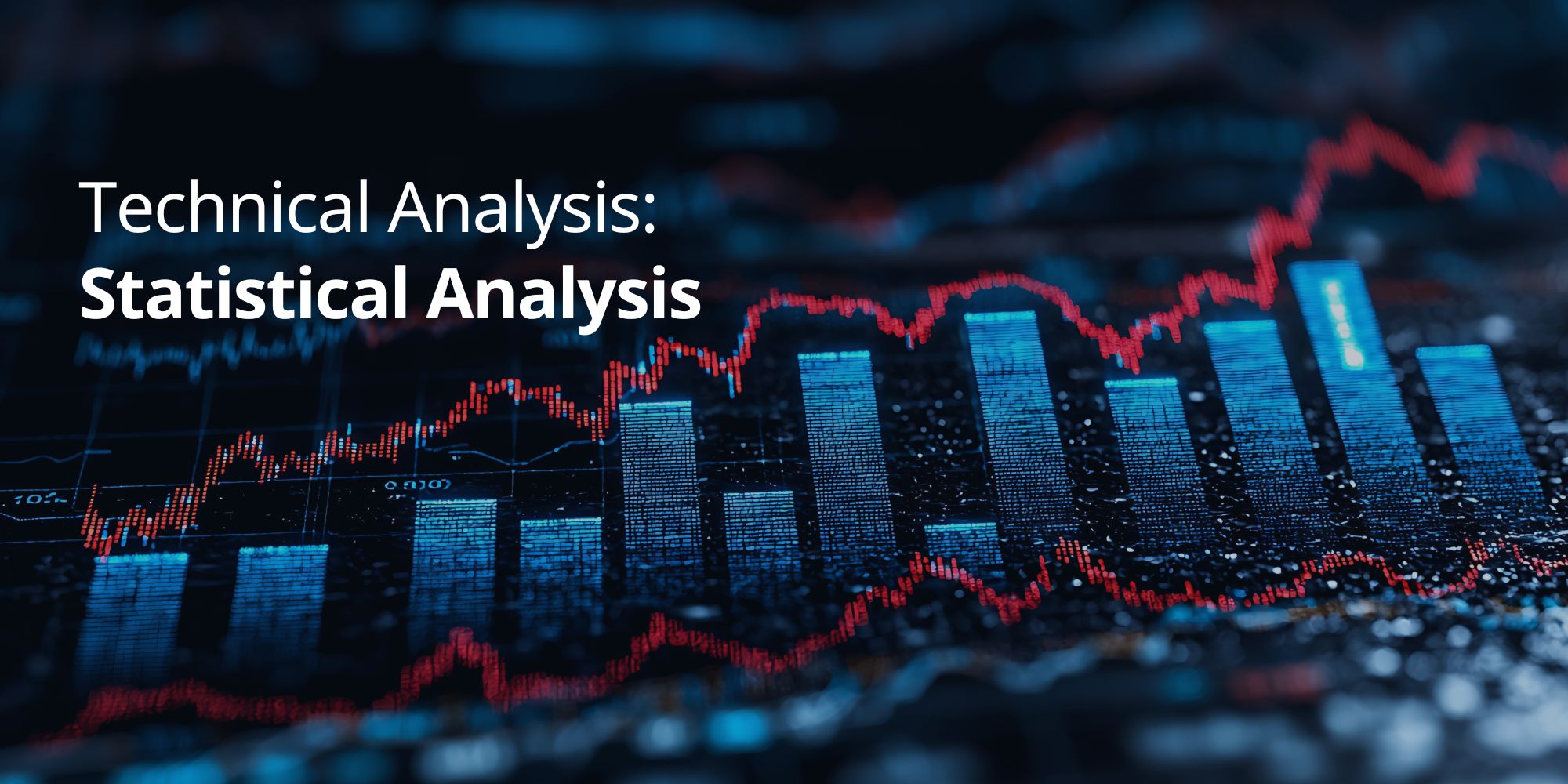Volatility Analysis: Definition, How It Works, Indication, Types & Factors
Volatility analysis helps you understand market sentiment, predict the potential range of price movements, and manage risk effectively. This comprehensive guide from Plexytrade explores the different types of volatility, key indicators for measuring volatility, and how to incorporate volatility analysis into your trading strategies. Whether you’re a short-term trader or a long-term investor, mastering volatility can significantly enhance your trading decisions.
What is Volatility Analysis?
Volatility analysis is the study of how much and how quickly the price of an asset fluctuates. In simpler terms, it measures the “swing” in the market. High volatility means that prices can change dramatically quickly, while low volatility indicates more stable price movements.
Understanding volatility is beneficial to accomplish the following structures in the financial markets:
- Risk Assessment: Volatility is often associated with risk. High volatility means greater potential for both profits and losses, while low volatility suggests a more predictable and less risky environment.
- Trading Opportunities: Volatility creates trading opportunities. Short-term traders often capitalize on high volatility to profit from rapid price swings. Even in long-term investing, understanding volatility can help you identify entry and exit points, manage risk, and adjust your portfolio accordingly.
- Market Sentiment: Volatility can reflect the overall mood of the market. High volatility often indicates uncertainty or strong emotions among traders, while low volatility suggests a calmer and more stable market.
How Does Volatility Analysis Work?
Volatility analysis involves using statistical methods to measure and understand price fluctuations in financial markets. One of the most common ways to measure volatility is through the standard deviation of an asset’s price.
Here’s a simplified explanation of how volatility is calculated:
- Gather Price Data: Collect the historical prices of the asset you’re analyzing over a specific period.
- Calculate the Average Price: Determine the average price over that period.
- Measure Deviations: Calculate the difference between each individual price and the average price.
- Calculate Variance: Square each of those deviations, sum them up and divide by the number of prices. This gives you the variance, which measures how spread out the prices are.
- Calculate Standard Deviation: Take the square root of the variance to get the standard deviation. This is the most common measure of volatility.
What Does Volatility Analysis Tell Us?
Volatility analysis provides valuable insights for traders and investors, helping them:
- Understand Market Sentiment: Volatility can reflect the overall mood of the market. High volatility often indicates uncertainty or heightened emotions among traders, while low volatility suggests a calmer, more stable market.
- Identify Trading Opportunities: Volatility creates price swings that traders can capitalize on. In trending markets, volatility can offer opportunities to buy low and sell high as prices fluctuate within the overall trend.
- Manage Risk Effectively: By understanding the potential range of price movements, traders can adjust their positions and risk management strategies accordingly. This helps protect capital and avoid excessive losses during periods of high volatility.
- Develop Trading Strategies: Volatility analysis can inform various trading strategies. For example, range-bound traders might focus on identifying support and resistance levels in volatile markets to capitalize on price oscillations within a defined range.
- Optimize Portfolio Allocation: Investors can use volatility analysis to optimize their portfolio allocation. This involves balancing their investments across different assets with varying volatility levels to achieve their desired risk-return profile.
What Are The Key Indicators Used In Volatility Analysis?
While there are various ways to analyze volatility, some commonly used indicators provide valuable insights into market fluctuations:
- Cboe Volatility Index (VIX): Often referred to as the “fear gauge” or “fear index,” the VIX measures the expected volatility of the S&P 500 index over the next 30 days. A higher VIX value indicates greater expected volatility and market uncertainty, while a lower VIX suggests a calmer market.
- Average True Range (ATR): The ATR measures the average range of an asset’s price movements over a defined period. It considers the true range, which includes gaps in price action, to provide a more comprehensive picture of volatility. A higher ATR value indicates greater price volatility, while a lower ATR suggests more stable price movements.
- Bollinger Bands: Bollinger Bands consist of a moving average and two standard deviation bands plotted around it. The width of the bands reflects the volatility of the asset. Wider bands indicate higher volatility, suggesting larger price swings, while narrower bands indicate lower volatility and more contained price movements.
These indicators can be easily integrated into trading platforms and charts, providing traders with a visual representation of market volatility and potential trading opportunities. Plexytrade offers advanced charting tools and a wide range of technical indicators, including VIX, ATR, and Bollinger Bands, to help traders analyze and understand market volatility.
Types of Volatility in Trading
Volatility isn’t a one-size-fits-all concept. There are different types of volatility that traders consider:
1- Historical Volatility (HV): Historical volatility looks at past price fluctuations to understand how volatile an asset has been. It’s calculated using the standard deviation of price changes over a specific period. Think of it as looking at a stock’s price chart and seeing how much it has jumped around.
2- Implied Volatility (IV): Implied volatility is a forward-looking measure. It estimates how volatile an asset is expected to be in the future, based on the prices of options contracts. Options are financial instruments that give you the right to buy or sell an asset at a specific price. When traders expect an asset to be more volatile, the prices of its options tend to increase. So, implied volatility is derived from these option prices.
3- Future-Realized Volatility (FRV): Future-realized volatility is a more advanced concept that combines historical volatility, current market conditions, and even machine learning algorithms to predict future volatility. It aims to provide a more accurate forecast of an asset’s volatility in the coming days or weeks.
Why Different Types Matter
Understanding the different types of volatility can help traders:
- Assess Risk: Historical volatility provides a baseline for understanding an asset’s risk profile.
- Price Options: Implied volatility is crucial for options traders to price contracts accurately.
- Develop Strategies: Future realized volatility can inform more sophisticated trading strategies that anticipate future market conditions.
What Are The Major Factors That Influence Stock Market Volatility?
Several factors can influence the level of volatility in stock markets, creating both opportunities and challenges for traders. Here are some of the major drivers:
1. Economic Factors: The health of the economy plays a significant role in market volatility. Key economic indicators like GDP growth, inflation rates, interest rate changes, and unemployment figures can all impact investor confidence and market sentiment. The economic calendar feature of Plexytrade can allow you to track down all economic events that can affect the financial markets.
2. Geopolitical Events: Global events, such as political instability, wars, natural disasters, and trade disputes, can create significant uncertainty in financial markets. This uncertainty often leads to increased volatility as investors react to the potential impact of these events on the global economy and specific industries.
3. Company Performance: The performance of individual companies can also influence market volatility. Earnings reports, product announcements, mergers and acquisitions, and other company-specific news can all trigger significant price movements and contribute to overall market volatility.
Plexytrade provides access to real-time market data, news feeds, and analytical tools to help traders stay informed and make informed decisions in dynamic market conditions.
What Does High Volatility Mean For Stock Market Investors?
High volatility in the stock market can be a double-edged sword. It presents both significant risks and potential rewards for investors.
The Risks:
- Increased Uncertainty: High volatility means greater uncertainty about future price movements. This can make it challenging to predict the direction and magnitude of price swings, increasing the risk of unexpected losses.
- Potential for Large Losses: When volatility is high, prices can move dramatically in a short period. This can lead to substantial losses, especially for traders who are overleveraged or who haven’t implemented proper risk management strategies.
The Opportunities:
- Potential for High Gains: Just as high volatility can lead to large losses, it can also create opportunities for significant gains. Skilled traders who can accurately anticipate price movements in volatile markets can capitalize on rapid price swings to generate substantial profits.
- Attractive Entry Points: Volatility often creates price dips or pullbacks within broader trends. These dips can present attractive entry points for long-term investors who are looking to buy assets at a discount.
What Does Low Volatility Mean For Stock Market Investors?
Low volatility in the stock market generally signals a period of stability and reduced risk. While it might not offer the same potential for rapid gains as high volatility, it can be an attractive environment for certain investors.
Benefits of Low Volatility:
- Reduced Risk: Low volatility means that price fluctuations are relatively small and predictable. This can be particularly appealing to risk-averse investors who prioritize capital preservation and steady growth.
- Long-Term Growth Potential: While short-term gains might be limited in a low-volatility environment, they can be conducive to long-term growth. Investors can use strategies like dollar-cost averaging to steadily accumulate assets over time, potentially benefiting from gradual price appreciation.
- Reduced Stress: Low volatility can provide a sense of calm and reduce the emotional stress associated with trading in turbulent markets. This can lead to more disciplined and rational decision-making.
Considerations for Low Volatility:
- Limited Short-Term Gains: Traders seeking to capitalize on rapid price swings might find low-volatility markets less appealing, as opportunities for quick profits are limited.
- Potential for Complacency: Extended periods of low volatility can lead to complacency among investors. It’s important to remain vigilant and monitor market conditions for potential shifts in volatility.
Frequently Asked Questions
Q: How can I use volatility analysis in my trading?
A: Start by understanding the different types of volatility and the key indicators used to measure it. Observe how volatility changes about market trends and news events. Use this information to adjust your trading strategies, manage risk, and identify potential trading opportunities.
Q: Is volatility analysis relevant for all types of traders?
A: Yes. Whether you’re a day trader, swing trader, or long-term investor, understanding volatility is crucial for making informed decisions. It helps you assess risk, identify opportunities, and adapt your strategies to different market conditions.
Q: How can investors protect themselves from volatility?
A: There are several ways to mitigate the risks associated with volatility:
- Diversification: Spread your investments across different asset classes to reduce the impact of volatility in any single holding.
- Hedging: Use financial instruments like options and futures contracts to hedge against potential losses. For example, buying put options can protect against a decline in the price of a stock.
- Stop-loss orders: Use stop-loss orders to automatically exit trades if the price moves against you beyond a certain threshold.
Q: How does sentiment analysis relate to volatility?
A: Sentiment analysis, which involves gauging the mood of the market through news and social media, can help anticipate changes in volatility. Shifts in sentiment often precede changes in market volatility, providing traders with early warning signs.
Q: Why is low volatility important for long-term investors?
A: Low volatility can be beneficial for long-term investors as it generally indicates a more stable and predictable market environment. However, it’s important to balance low volatility with the growth potential. Long-term investors should aim for a portfolio that provides a suitable mix of stability and growth potential.















